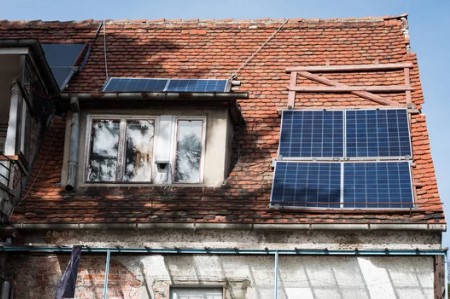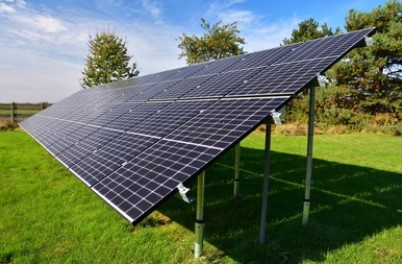How to assess solar power potential ? .When considering a solar energy system, it’s crucial to conduct a thorough site evaluation. This process involves assessing sunlight exposure, shading analysis, roof condition and suitability, ground-mounted installations, local regulations and permitting, incentives and rebates, and additional factors. A comprehensive assessment ensures the most efficient and cost-effective solar installation for your property.
Optimizing Sunlight Exposure for Maximum Solar Energy Production

Sunlight exposure plays a critical role in the efficiency of a solar energy system. By analyzing solar radiation levels and optimizing panel orientation and tilt angle, you can maximize energy generation and reduce electricity bills. In this article, we’ll explore the importance of sunlight exposure and discuss strategies to ensure your solar panels receive maximum sunlight throughout the day.
Solar Radiation Analysis
To optimize sunlight exposure, it’s crucial to assess the site’s solar radiation levels. Solar radiation data can be collected from tools such as the National Renewable Energy Laboratory’s (NREL) Solar Radiation Data or other local resources. Analyzing this data helps you understand the potential energy generation of your solar installation and identify the best location for your panels.
Panel Orientation
Panel orientation directly affects solar energy production. In the northern hemisphere, panels should face south, while in the southern hemisphere, they should face north. By orientating your solar panels towards the equator, you can ensure optimal sunlight exposure and maximize energy generation.

Tilt Angle
The tilt angle of solar panels is another critical factor that influences energy production. An optimal tilt angle maximizes sunlight exposure throughout the year. Generally, the tilt angle should be equal to the site’s latitude, but it can be adjusted seasonally for even greater efficiency.
Shading Minimization
Shading can significantly reduce solar panel performance. To optimize sunlight exposure, identify and eliminate potential shading issues caused by nearby structures, trees, or other obstacles. Proper panel positioning and strategic trimming of vegetation can help minimize shading and boost solar energy production.
Monitoring and Maintenance
Regular monitoring and maintenance of your solar energy system can ensure consistent sunlight exposure. Cleaning your solar panels and checking for obstructions can help maintain optimal performance and extend the life of your system.
Conclusion
Sunlight exposure is vital for maximizing solar energy production, and optimizing panel orientation, tilt angle, and shading minimization are essential for achieving this goal. By focusing on these aspects, you can ensure your solar panels receive maximum sunlight, resulting in a more efficient and cost-effective solar installation.
Conducting Shading Analysis for Optimal Solar Panel Efficiency
Shading can significantly impact the efficiency of solar panels, reducing the overall energy generation. By conducting a shading analysis, you can identify potential issues caused by nearby structures, trees, or other obstacles and take necessary measures to minimize their impact. In this article, we will discuss the importance of shading analysis and offer practical tips for ensuring your solar panels perform at their best.
The Impact of Shading on Solar Panels
Shading can cause a significant reduction in solar energy production, as even partial shading can affect the overall output of the entire solar array. Shaded solar cells produce less power, which can negatively affect the performance of the entire panel and reduce the system’s efficiency.
Shading Analysis Methods
There are several methods for conducting a shading analysis. Some of the most popular methods include:
- Solar Pathfinder: This tool uses a fisheye lens and a reflective dome to provide a full-year shading analysis in a single photograph. By analyzing the photograph, you can identify shading issues and determine the best location for your solar panels.
- SunEye: The SunEye is a digital tool that captures hemispherical images and calculates shading percentage throughout the year. It also provides recommendations for optimal panel positioning and tilt angles.
- Software-based tools: Various software tools, such as PVsyst and HelioScope, use 3D modeling and satellite imagery to analyze shading and simulate solar energy production for a specific site.

Minimizing Shading Effects
To minimize shading effects on your solar panels, follow these tips:
- Choose the optimal location: Select an area with minimal shading from nearby structures or vegetation. Ensure the site receives maximum sunlight throughout the day and year.
- Optimize panel layout: Arrange your solar panels to minimize shading between rows, considering the sun’s path throughout the day and year.
- Trim vegetation: Regularly trim trees or bushes that can cast shadows on your solar panels, especially during peak sunlight hours.
- Monitor and maintain: Regularly check your solar panels for shading issues and clean them to ensure optimal performance.
Conclusion
Shading analysis is a crucial step in ensuring the efficiency of your solar energy system. By identifying potential shading issues and taking appropriate measures to minimize their impact, you can maximize your solar panels’ performance and increase your overall energy production.
Ensuring Roof Condition and Suitability for Rooftop Solar Installations
Before installing rooftop solar panels, it is crucial to assess the roof’s condition and suitability. By evaluating factors such as structural integrity, material, and slope, you can ensure that your roof can support solar panels and mounting hardware. In this article, we will discuss the importance of roof evaluation and provide tips for ensuring a safe and long-lasting solar installation.
The Importance of Roof Condition and Suitability
A roof in good condition is essential for a successful rooftop solar installation. An unsuitable roof can lead to potential issues, such as leaks or structural damage, and may even cause the solar system to underperform. Therefore, assessing your roof’s condition and suitability helps ensure a safe installation and reduces the risk of costly repairs or maintenance.
Key Factors to Consider
When evaluating your roof for solar installation, consider the following factors:
- Structural integrity: The roof must be strong enough to support the weight of solar panels and mounting hardware. A structural engineer or qualified solar installer can assess the roof’s load-bearing capacity.
- Roof material: Solar panels can be installed on various roof materials, such as asphalt shingles, metal, or tile. However, some materials may require special mounting hardware or additional considerations to ensure a secure installation.
- Roof slope: The slope of your roof can impact the efficiency of your solar panels. Ideally, the solar panels should be installed at an angle that maximizes their exposure to sunlight throughout the year. A solar professional can help determine the optimal tilt angle for your specific location.
- Roof age and condition: Older roofs or those in poor condition may require repairs or replacement before solar panel installation. Installing solar panels on a damaged or worn-out roof can lead to further issues and compromise the solar system’s performance.

Tips for Ensuring Roof Suitability
To ensure your roof is suitable for solar installation, follow these tips:
- Consult a professional: Work with a qualified solar installer or structural engineer to assess your roof’s condition and suitability for solar panels.
- Perform necessary repairs: If your roof requires repairs or replacement, address these issues before installing solar panels to avoid potential complications and ensure a long-lasting installation.
- Choose appropriate mounting hardware: Select mounting hardware that is compatible with your roof material and can securely support your solar panels.
- Regular maintenance: Maintain your roof by conducting regular inspections, cleaning debris, and addressing any potential issues to ensure optimal performance of your solar panels.
Conclusion
Evaluating roof condition and suitability is a crucial step in the rooftop solar installation process. By assessing key factors such as structural integrity, material, and slope, you can ensure a safe and long-lasting solar installation that optimizes energy production.
Exploring Ground-Mounted Solar Installations: A Viable Alternative
For properties with limited roof space or unsuitable roof conditions, ground-mounted solar installations can be an excellent alternative. By assessing factors such as available land, soil type, and accessibility, you can determine if a ground-mounted solar system is a feasible option for your property. In this article, we will discuss the benefits of ground-mounted installations and provide guidance on evaluating their suitability.
The Benefits of Ground-Mounted Installations
Ground-mounted solar systems offer several advantages over rooftop installations:
- Versatility: They can be installed on properties with insufficient roof space or unsuitable roofing materials.
- Optimal positioning: Ground-mounted panels can be easily positioned to maximize sunlight exposure, increasing energy production.
- Ease of maintenance: Ground-level installations allow for more accessible maintenance and cleaning of solar panels.
- Customization: Ground-mounted systems can be customized to accommodate specific energy needs and land constraints.

Evaluating the Suitability of Ground-Mounted Installations
When considering a ground-mounted solar installation, evaluate the following factors:
- Available land: Ensure there is sufficient land area for the installation, keeping in mind any future expansion plans.
- Soil type: The soil type can impact the stability and suitability of mounting structures. Consult with a solar installation professional to determine the best foundation type for your specific soil conditions.
- Accessibility: Ensure the installation site is easily accessible for construction, maintenance, and potential upgrades.
- Local regulations and permitting: Be aware of any zoning restrictions, building codes, or permitting requirements that may impact the installation of a ground-mounted solar system.
- Sunlight exposure: Verify that the proposed installation site receives ample sunlight throughout the day, free from shading or obstructions.
Conclusion
Ground-mounted solar installations can be a viable alternative for properties with limited roof space or unsuitable roof conditions. By assessing factors such as available land, soil type, and accessibility, you can determine if a ground-mounted solar system is feasible for your property.
Navigating Local Regulations and Permitting for Solar Installations
When embarking on a solar installation project, it’s crucial to navigate local building codes, zoning restrictions, and utility interconnection requirements. Ensuring compliance with these regulations helps avoid potential delays and complications during your solar project. In this article, we’ll provide insights into key regulatory aspects and offer guidance for a smooth solar installation process.
Understanding Local Building Codes
Local building codes outline the structural, electrical, and safety requirements for solar installations. These codes may specify requirements for the mounting system, wiring, and grounding, as well as wind and snow load capacity. Consult with a solar installation professional familiar with local building codes to ensure your project complies with these requirements.
Navigating Zoning Restrictions
Zoning regulations govern permissible land uses within specific areas of a jurisdiction. Some zoning ordinances may limit the installation of solar panels on residential, commercial, or agricultural properties. Check with your local planning department to determine if any zoning restrictions could affect your solar installation.

Utility Interconnection Requirements
When connecting your solar installation to the grid, you must comply with the utility’s interconnection requirements. These requirements may include specific equipment and safety standards, as well as the application process and fees for grid connection. Consult with your local utility provider to ensure that your solar installation meets their interconnection requirements.
The Permitting Process
Obtaining the necessary permits is a crucial step in the solar installation process. The permitting process typically involves submitting a solar installation plan, which includes details on the system design, equipment specifications, and electrical diagrams. Additionally, a site plan may be required, showing the location of the solar panels and any associated equipment. Be prepared for potential delays, as the permitting process can take several weeks or even months to complete.
Conclusion
Navigating local regulations and permitting is an essential aspect of the solar installation process. By researching local building codes, zoning restrictions, and utility interconnection requirements, you can ensure a smooth solar project that complies with all applicable regulations.
Exploring Incentives and Rebates for Solar Energy Installations
Solar energy is an increasingly popular choice for homeowners, and incentives and rebates can make this renewable energy source even more affordable. Federal, state, and local financial incentives help offset the cost of solar installation, making it a more accessible and cost-effective investment. In this article, we will discuss various incentives and rebates available for solar energy installations.
Federal Incentives
The federal government offers tax credits to homeowners who install solar energy systems. The Solar Investment Tax Credit (ITC) allows homeowners to claim a percentage of the cost of their solar installation as a credit on their federal income taxes. This credit can significantly reduce the overall cost of a solar project, making it more financially viable.
State Incentives
Many states offer additional incentives for solar installations, such as tax credits, rebates, or grants. These programs vary by state and can provide substantial savings on the cost of solar energy systems. Research your state’s specific incentives to understand how they can benefit your solar project.

Local Incentives
Local governments and utility companies may also offer incentives and rebates for solar energy installations. These programs can include property tax exemptions, reduced permit fees, or rebates for purchasing solar equipment. Check with your local government and utility provider to learn about any available incentives in your area.
Net Metering
Net metering programs allow homeowners with solar energy systems to sell excess power back to the grid, earning credits on their utility bills. These credits can be used to offset the cost of electricity consumed when solar production is low. Net metering is a win-win situation: homeowners get financial compensation for surplus energy, and the grid receives additional clean power.
Conclusion
Researching federal, state, and local incentives and rebates can make solar energy more affordable and accessible. By taking advantage of these financial programs, homeowners can offset the cost of solar installation, making it a more cost-effective investment in renewable energy.
Considering Additional Factors in Site Evaluation
When evaluating your property for solar energy installation, it’s essential to consider not just the technical aspects but also aesthetics, potential system expansion, and environmental impact. Taking a well-rounded approach ensures you choose the best solar installation for your property, meeting all your energy needs and expectations. In this article, we will discuss the importance of considering these additional factors during the site evaluation process.
Aesthetics
The appearance of your solar installation is an important consideration, as it can impact your property’s curb appeal. Some homeowners prefer a low-profile design, while others may choose more visible solar panels as a statement of their commitment to renewable energy. When selecting your solar system, consider how it will blend with your home’s architecture and style to ensure an aesthetically pleasing result.
Potential System Expansion
As your energy needs evolve, you may want to expand your solar system in the future. During the site evaluation process, consider the available space for potential system growth. Ensure that your property can accommodate additional solar panels or battery storage if necessary, allowing for flexibility as your energy requirements change over time.
Environmental Impact
Solar energy is an environmentally friendly power source, but the installation process can have some impact on your property’s landscape. Minimize disruption to natural habitats and vegetation by carefully selecting the location of your solar panels. Additionally, choose solar equipment that is manufactured sustainably and ethically to further reduce the environmental impact of your installation.
Conclusion
By considering additional factors like aesthetics, potential system expansion, and environmental impact, you can ensure a well-rounded site evaluation for your solar energy installation. This comprehensive approach will help you choose the best solar system for your property, meeting your energy needs and expectations while minimizing any negative effects on your property’s appearance or the environment.